The Los Angeles Times ran a profile on Ms. Power this weekend (“She spent decades transforming Southern California landmarks. Go inside Nancy Goslee Power’s private garden,” so I’m grabbing the opportunity to repost a visit I made to her garden in May 2016. There’s some additional photos in my post on details mentioned in the article, such as the “river stones set in a chevron pattern.” Enjoy!
Since the 5/7/16 tour, Gov. Jerry Brown surprised us all by announcing that mandatory water restrictions are now suspended except for agriculture. Water use policies will revert back to the local level. So pat yourself on the back for enduring those spartan showers, ditching the lawn, adding in more permeability to your garden, and overall diligent water use reduction efforts.
(But you still can’t hose down your driveway, so get over that.) Even so, this might be a good moment to emphasize the big picture. From The California Weather Blog:
“Nearly all of California is still ‘missing’ at least 1 year’s worth of precipitation over the past 4 years, and in Southern California the numbers suggest closer to 2-3 years’ worth of ‘missing’ rain and snow. These numbers, of course, don’t even begin to account for the effect of consecutive years of record-high temperatures, which have dramatically increased evaporation in our already drought-stressed region.”
And the bigger, possibly more sobering picture is that even in non-drought years, Los Angeles averages only 15 inches of rainfall. So the problem of too little water for too many people is not going away. Ever. And it was a problem long before the governor hit the red alert button. But you know what? Other cultures have already figured this out, this business of crowding ourselves into hot, dry lands. And there’s great examples all around town. Landscape designer Nancy Goslee Power’s garden on the recent GC Open Days tour is a case study of these principles. And while we all obsess over what to do with the lawn, her almost 20-year-old garden suggests we might also think about where outdoors to eat, nap, cook, read, chat with friends, daydream, warm by a fire, take shelter from the sun, catch an ocean breeze, inhale clouds of jasmine — the scope of possibilities extends far beyond the boundaries of that poster child for this drought, the lawn, and what replaces it.
I liked this line from that keen observer of all things Southern Californian, Joan Didion, in the 5/26/16 New York Review of Books. It easily applies to our attitudes about water in Los Angeles:
“I have lived most of my life under misapprehensions of one kind or another.” Boy howdy, you said it, Ms. Didion. Don’t we all? (“California Notes” NYRB 5/26/16)
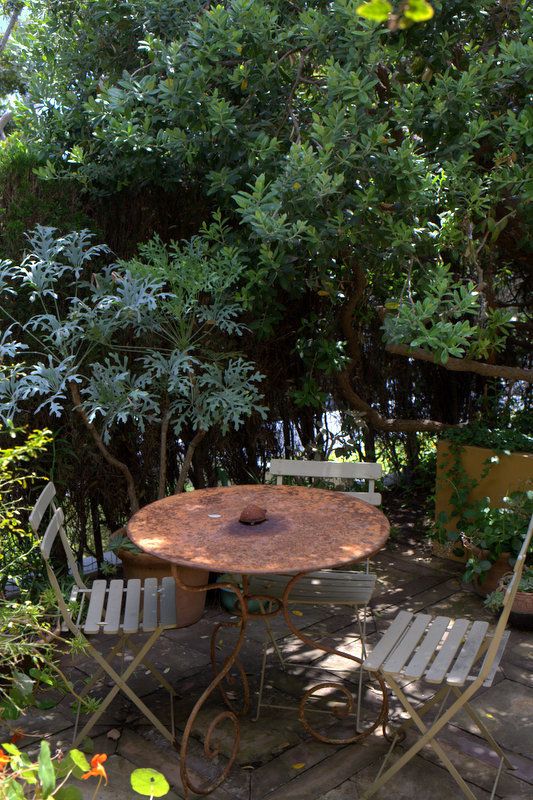
This little table and chairs is at the front of Ms. Power’s small Santa Monica house, just off the street, entirely screened by plantings. A short staircase zig-zags up from the sidewalk through retaining-wall beds filled with agaves and matilija poppies, depositing visitors in this shady “foyer.” A potted cussonia at the entrance to a garden is always an auspicious sign of good things to come.
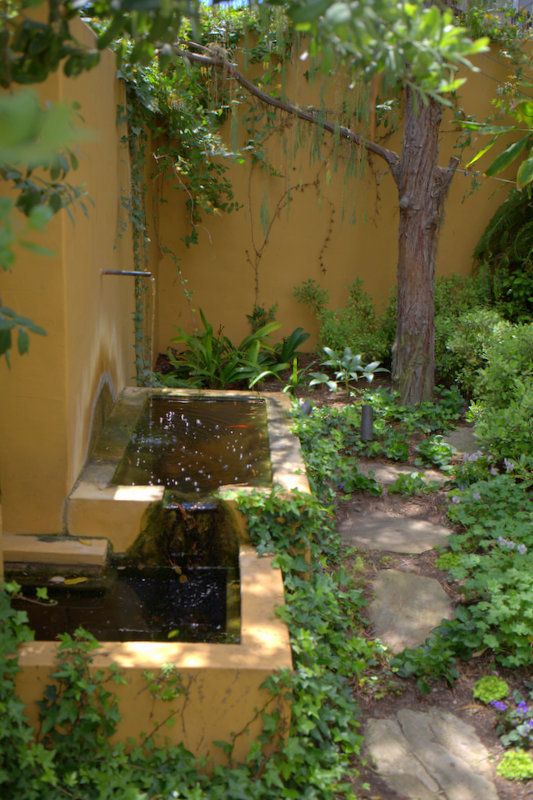
Also in the front courtyard is the first of many small fountains and pools. Implicit is the strong affirmative that, yes, water is precious stuff. Watch it glisten and sparkle in the sun, ripple in the wind, draw in birds. Just don’t ever take it for granted.
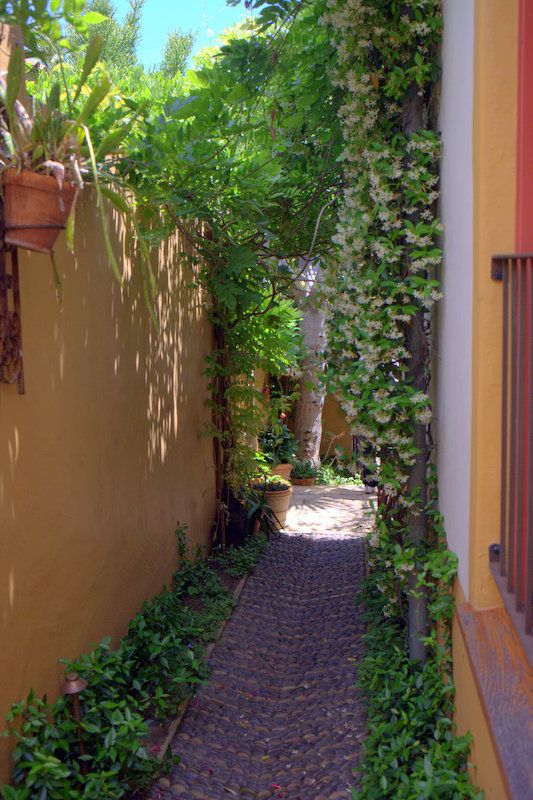
Narrow passage to the back of the house, a jasmine-scented journey this time of year.
“The forgotten spaces in most people’s houses — the side yards and setbacks — I look at as opportunities.” (All quoted material from “Power of Gardens” by Nancy Goslee Power.)
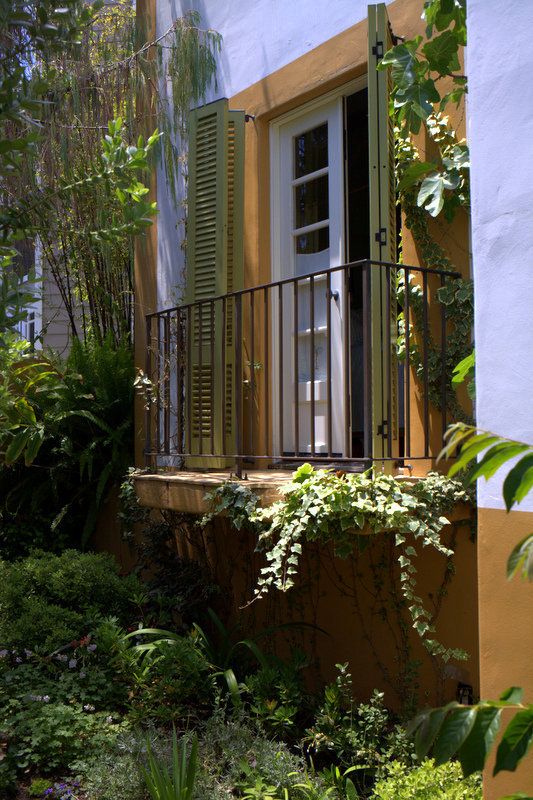
Already you can sense the strong interplay between indoors and outdoors, the feeling of shelter extending beyond the house, eager to envelope and claim the outdoors as well.
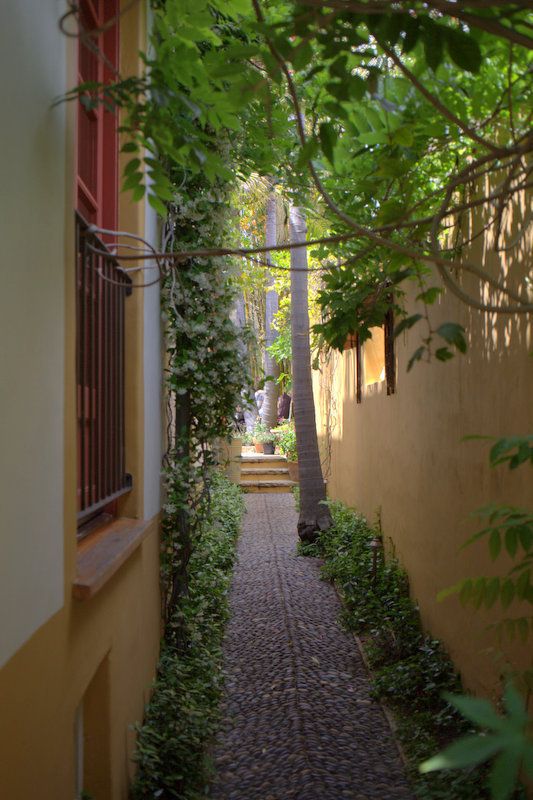
Up those distant steps leads to the banquette in the photo below.
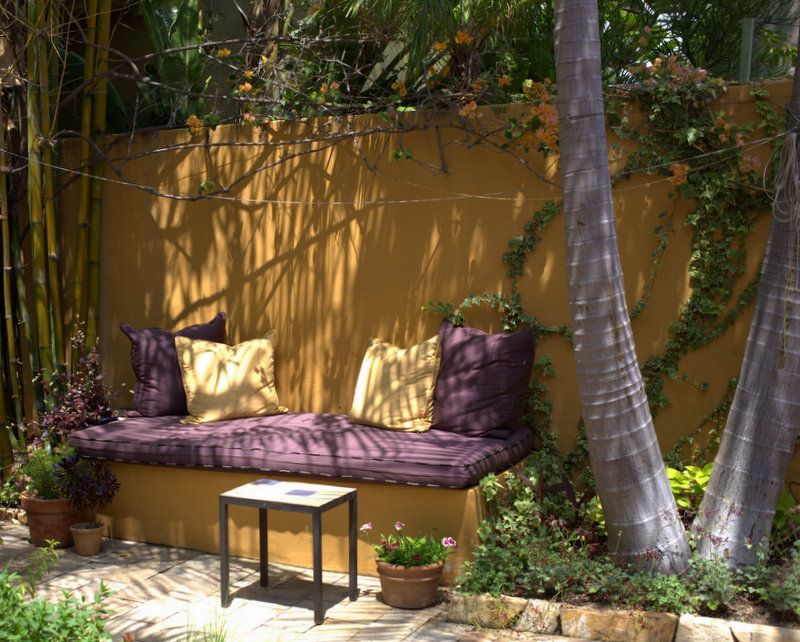
Ms. Power’s “napatorium.”
“Walled gardens offer so many solutions still relevant in the modern world. They give privacy and safety from the outside environment, often perceived as hostile. The living spaces of the house open onto exterior spaces, and outdoor dining is possible in courtyards in good weather most of the year.”
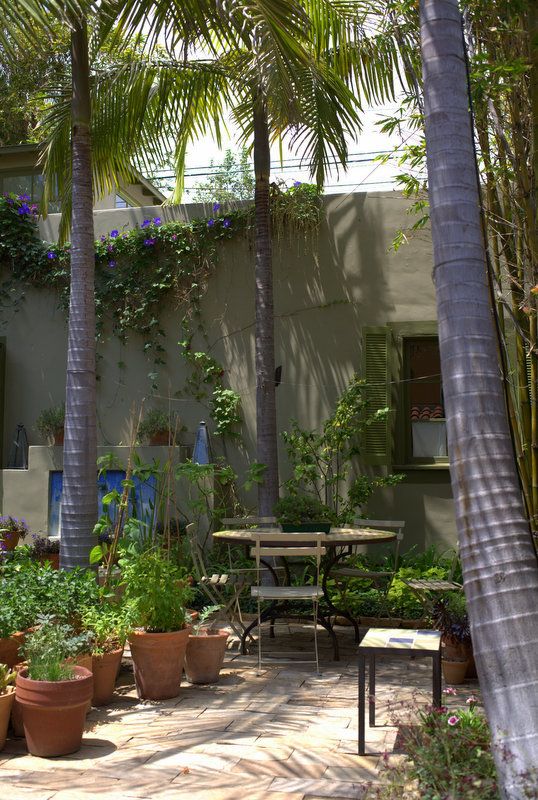
“[T]he more you define a space, the larger it becomes.”
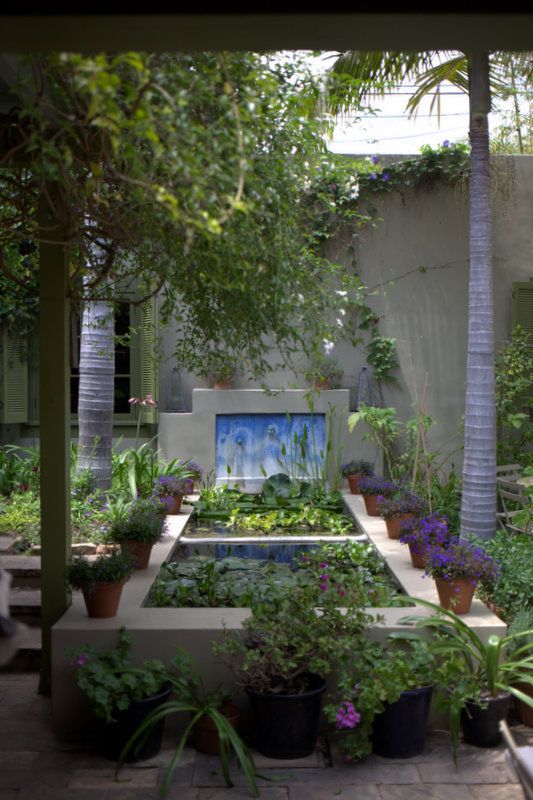
The view from the kitchen door.
“I designed the water to be seen all the way through the house and make a strong central axis that pulls you outside.”
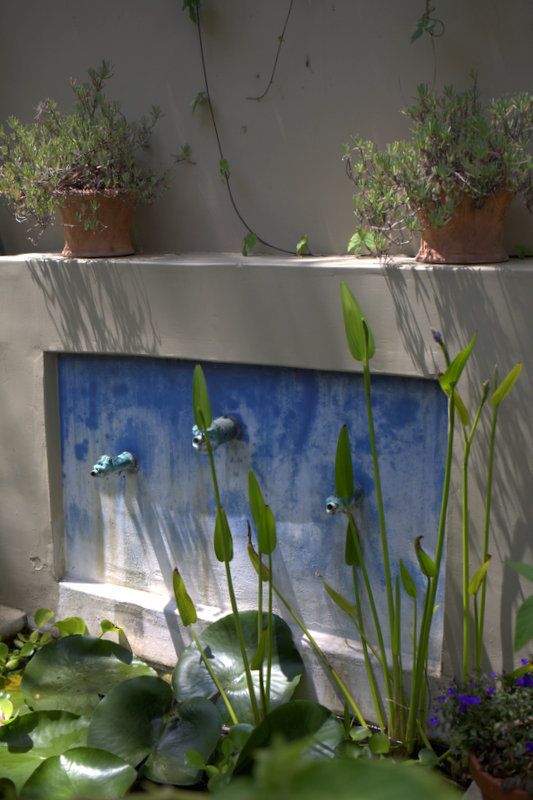
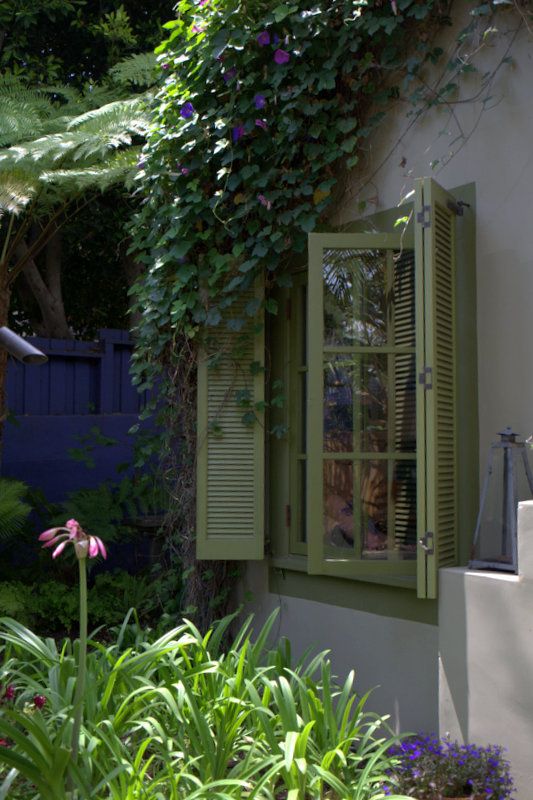
A small apartment/cottage shares the wall with the rill.

Dining area off the kitchen, where the colors warm up.
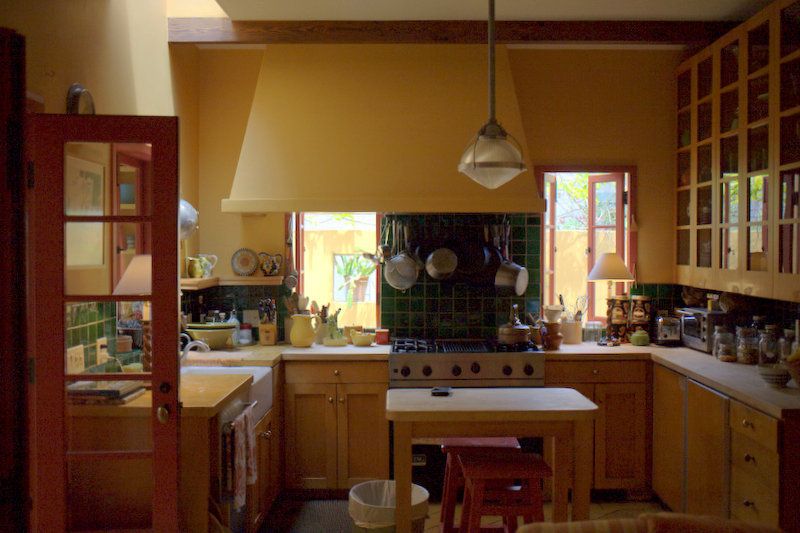
The kitchen, windows open to the narrow, pebbled side passageway, a nook in the wall for a potted plant just visible through the window.
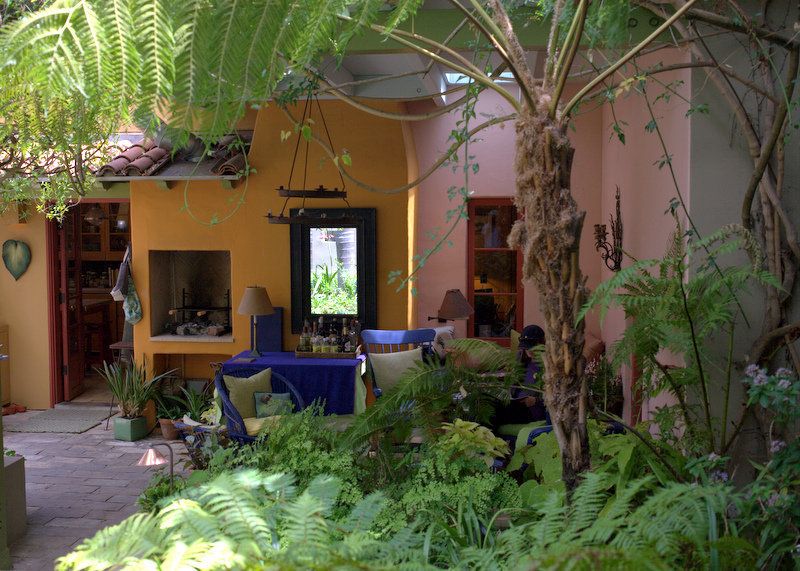
More shaded seating just off the kitchen.
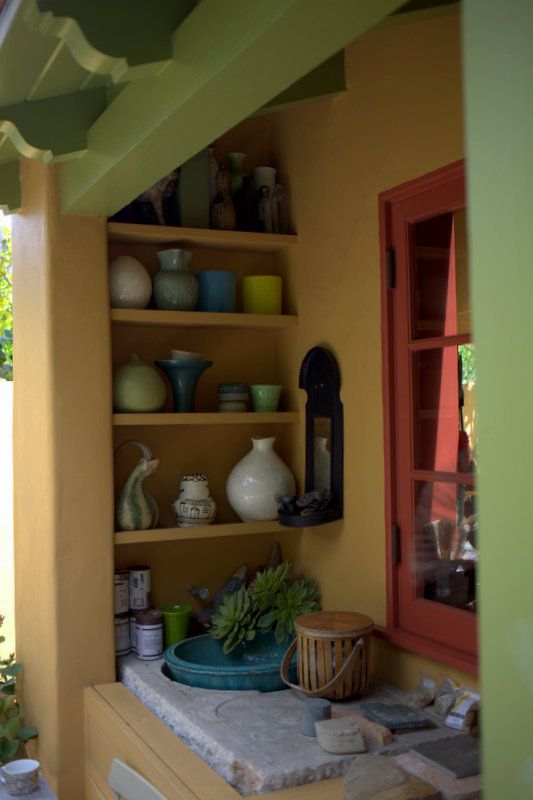
Everywhere were the tell-tale signs that the outdoors were as lived in as the indoors, if not more so.
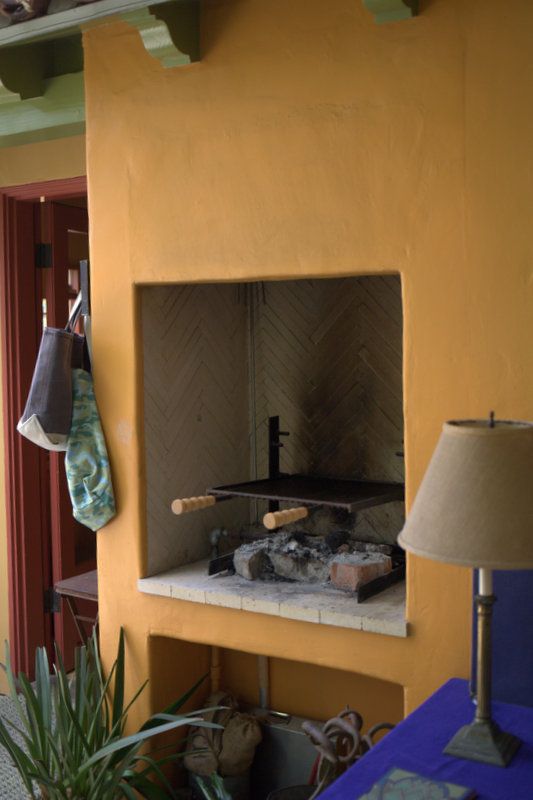

From the street, you’d have no idea what lay up that small flight of steps off the sidewalk, so tours like this are much appreciated.
“I wanted Casa Nancina to reveal herself slowly…I didn’t want my landscape to stand out. It needed to be discreet and feel as if it belonged to the neighborhood.”

How better to appreciate and love the garden than to live in it and invite it inside as well. A splendid space!
Peter, it’s such a good example of house and garden communicating!
A most welcome revisit! Maybe the LAT photographer was unlucky in the light on offer at the appointed day and time, but your photos are better than the ones in the article. Take the axial rill pool, for example. Even when I put my thumb over the pug in the Times shot (which greatly improves the view; sorry, pug fans), yours communicates much more of the intended mini-Alhambra effect. I’d love someday to see a photo of it from inside the house, pulling you outside per the designer’s intention.
The more I revisit these images, the more details jump out with a more powerful effect (pun not intended but, hey) than they had in the original post. The shadow patterns in the “napatorium”, the intensely Mediterranean effect of the pots lined up on the ledge below a window, the light-catching bubbles in the fountain pool, the irresistible pull of the glimpsed sunny sector beyond the serene chevron corridor. You really *got* this garden for us all; thanks so much.
I was pleased to see the LA Times piece on Nancy Goslee Power and even more pleased to see a re-post of your more expanded coverage. It’s got me wondering where I could put my own “napatorium”!